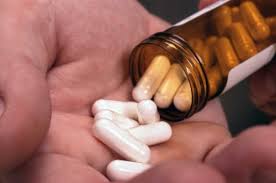Typhoid fever is an infection caused by the Salmonella typhi or Salmonella paratyphi bacteria. Being a bacterial infection, typhoid fever treatment mainly involves the use of antibiotics to kill the typhoid bacteria.

Typhoid Fever Treatment – A Look At What’s Involved
The use of antibiotics is recommended for typhoid fever treatment to:
-
Alter The Course Of The Disease
Antibiotics are used to resist the progress of typhoid and the growth of the typhoid bacteria in the body. They reduce the duration of the typhoid fever symptoms (from 14-25 days to 3-5 days) if the treatment is started at the earliest.
-
Treat The Basic Cause
Antibiotics kill the infectious agent, preventing the progress of the infection.
-
Reduce Mortality Rates In Typhoid Cases
With the use of appropriate antibiotics, the mortality rate in cases of typhoid has been reduced from 15% in the past to less than 1%.
-
Prevent Dangerous Complications
If left undiagnosed and untreated, typhoid may result in complications like intestinal perforation and the spread of the infection to other organs, especially to the peritoneum i.e. the membranous sac in abdomen
Components Of Typhoid Fever Treatment
-
Treating The Basic Cause
Typhoid patients are primarily treated with antibiotic medicines, in order to counter the causes of typhoid. As this disease is caused by bacterial infection, killing the bacteria automatically stops the symptoms and the progress of the disease. Some of the drugs used are:
- Fluoroquinolones – This group of drugs includes ciprofloxacin, which is a commonly used antibiotic to kill the typhoid bacteria and reduce their number in body
- Cephalosporins – Antibiotics belonging to this group, such as Cefotaxime, Cefixime, and Ceftriaxone have been observed to be very effective
-
Old Antibiotics Versus New Antibiotics
Previously, antibiotics like Chloramphenicol, Ampicillin, and Trimethoprim-sulphamethoxazole were used to treat typhoid, but due to various undesirable effects and reasons, they have become obsolete.
Modern day antibiotics include Ceftriaxone, Cefixime, Cefotaxime, Ciprofloxacin, and Azithromycin. These drugs are more effective than the older ones and also have fewer side effects.
-
Choice Of An Antibiotic
Drug selection is based upon the sensitivity of the typhoid bacteria to the drug in question. The response of the bacteria has to be tested with culture and sensitivity studies in the laboratory. Other factors for selecting the appropriate drug include the patient’s tolerance toward the drug, the presence of any kidney or liver disease, and the data generated from the studies conducted in that particular geographical region.
-
The Resistance Of Bacteria To Drugs
Over a period of time, the typhoid bacteria become resistant to the effects of some drugs, despite having been sensitive to them earlier. This phenomenon is called bacterial resistance.
-
The Duration And Dosage Of Medication
The frequency and duration of drug administration varies with the severity of the disease, the drug chosen, and the standard dosage schedules advocated for these drugs. The drug may be administered either orally or through injections directly into the veins. The dosage schedules must be followed strictly as per the doctor’s advice.
-
Treating The Symptoms Of Typhoid
- Reducing fever- As patients may have high grade fever as a typhoid symptom, antipyretics (drugs that control fever) like Paracetamol can be used to normalize the body temperature.
- Fighting body aches and headaches – Headaches, muscle pains, and generalized body pain can be treated with analgesics (drugs that alleviate pain) like Paracetamol, Ibuprofen, and Diclofenac.
-
Surgical Treatment
Surgery may be required only in patients with complications of typhoid, such as intestinal perforation and peritonitis (spread of the infection to the peritoneum in abdomen).
In the case of people who are long-term carriers of the Salmonella bacteria, if antibiotics fail to destroy the bacteria, the gall bladder may be removed to eliminate the site of the Salmonella typhi colonization.
-
Recovery Measures
- If you have a typhoid infection, rigidly follow the drug schedules prescribed by your doctor. This helps reduce the chances of complications, hastens the recovery process, and decreases the duration of the illness.
- Maintain high levels of sanitation. Ensure that you wash your hands properly after using the toilet and before eating food.
- Drink safe water and reduce the risk of water contamination by adopting measures like boiling and chlorination of water.
- Complete the prescribed course of medication to avoid becoming a long term carrier of typhoid even after the symptoms have disappeared.
- Keep an eye out for the occurrence of similar symptoms again in future, as this could indicate a relapse.

Typhoid fever treatment is mainly dependent on the use of antibiotics to kill the typhoid bacteria. Early diagnosis through the Typhoid test and subsequent treatment of the infection can help avoid complications like intestinal perforation. If you have been infected with typhoid, ensure that you strictly follow your doctor’s advice to recover quickly and avoid becoming a long-term carrier of the typhoid bacteria.